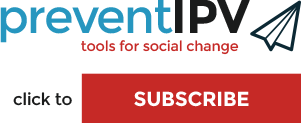Making the Case and Building a Movement for Prevention
While the very existence of violence and high rates of victimization should be compelling enough to engage untapped allies, the reality is that moving from inaction to action requires a shift in culture. It requires movement building and social change. Preventing IPV is exactly this – an ongoing social change effort.
To create the broad-based impact that we want, prevention needs to be woven into the fabric of our culture.
Our partners in prevention need to be a part of our daily lives. Great IPV prevention efforts do not happen in a vacuum – they require an array of sustained and ever expanding partnerships with business, public health, social justice, service-delivery systems, and our own communities in an effort to create lasting and effective social change.
What this space offers and how it can be used
There are a variety of approaches for framing prevention to potential partners. This section provides materials and guidance for successfully making the case for prevention to funders and a wide array of community partners, including what we know about the impact that robust and sustainable primary prevention efforts can have in working to eliminate the root causes of IPV in our culture. It is a sharable resource to support state coalitions, local programs, and prevention practitioners in reaching untapped and/or potential allies in their work to prevent IPV. Each page is designed to engage the particular audience it specifies and offers downloadable tools to further incorporate into your own prevention engagement efforts.
- Partners in Business & Policy
- Community Partners
- Allies in Health, Wellness, and Social Justice
- Advocates & Movement Makers
Additional reading on this topic
The resources below offer a deeper exploration into effectively making the case for prevention, developed by allies and partners in the violence prevention movement.
Making the Case for Prevention from the Prevention Institute
This list of publications from the Prevention Institute includes resources on reducing health care costs through prevention, and directions for improving community, individual, and economic health.
Making the Case for Domestic Violence Prevention Through the Lens of Cost-Benefit: A Manual for Domestic Violence Prevention Practitioners by Angela Browne-Miller for Transforming Communities: Technical Assistance, Training and Resource Center (TC-TAT) (June 2006)
Provides a step-by-step approach to understanding how cost-benefit thinking can be applied to domestic violence prevention. Each chapter offers an overview, definition and discussion of relevant terms, statistics and examples, and user-friendly worksheets.
- Related guide: User's Guide: Making the Case for Domestic Violence Prevention Using a Cost-effectiveness Framework by Lisa Hoffman for Transforming Communities: Technical Assistance, Training & Resource Center (2010)
- Related PreventConnect Web Conference: From Data to Prevention: Framing Sexual and Domestic Violence Prevention Impact From a Cost-Effectiveness Perspective with Lisa Hoffman of TC-TAT (June 2011)
Making the Case for Injury and Violence Prevention by Safe States (2011)
This document provides insights, strategies, and tips from directors of state injury and violence prevention programs on how garner support from state health officials and other leaders. The overall goal of the publication is to help state directors elevate injury and violence prevention as priorities within their state health departments.
Rape Prevention and Education Program (RPE) Factsheet by the National Sexual Violence Resource Center & National Alliance to End Sexual Violence (2011)
This overview of the U.S. National Rape Prevention and Education Program (RPE) can be used as a sample case statement, including information on purpose, scope and impact.




